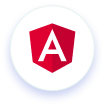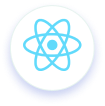Transforming HR Management in a Leading Healthcare Organization






Client Requirement
In the rapidly evolving landscape of healthcare, efficient management of human resources is critical for ensuring quality patient care, compliance with regulations, and operational excellence. The healthcare organization under review recognized the need to modernize its HR practices to align with industry standards and accommodate its growing workforce.
Objective
Streamline HR Processes
Implement a comprehensive HRMS to automate routine tasks such as payroll, leave management, and performance evaluations.
Ensure Compliance
Develop features within the HRMS to facilitate compliance with industry regulations, including robust data security measures and audit trails.
Improve Talent Management
Enhance recruitment, onboarding, and training processes to attract and retain top talent within the organization.
Enhance Employee Experience
Implement features to promote employee engagement, such as self-service portals, feedback mechanisms, and recognition programs.
Integration and Scalability
Ensure seamless integration with existing systems while providing scalability to accommodate future growth and technological advancements.
Our Approach
Needs Assessment
The project commenced with a comprehensive needs assessment to identify key pain points, requirements, and objectives. Stakeholder engagement sessions were conducted to gather inputs from HR personnel, department heads, and end-users.
Design and Configuration
The HRMS was designed and configured to align with the organization’s workflows, policies, and regulatory requirements. This involved tailoring modules, data fields, and user permissions to ensure seamless integration with existing systems and processes.
Data Insertion and Integration
Existing HR data from disparate systems and manual records were inserted to the new HRMS platform. Integration with other critical systems such as the ERP, time and attendance tracking, and electronic health records (EHR) was established to ensure data consistency and interoperability.
Training and Change Management
Comprehensive training programs were conducted for HR staff, managers, and employees to familiarize them with the new HRMS interface, functionalities, and best practices. Change management initiatives were implemented to address resistance to change and promote user adoption.
Testing and Quality Assurance
Rigorous testing and quality assurance procedures were carried out to identify and rectify any bugs, errors, or inconsistencies in the system. User acceptance testing (UAT) was conducted to ensure that the HRMS met the organization’s requirements and expectations.
Go-Live and Support
The HRMS was rolled out in phases to different departments and facilities, with dedicated support provided during the transition period. Continuous support, maintenance, and periodic updates were scheduled to address any issues, optimize performance, and incorporate new features.
Solution
Comprehensive HRIS (Human Resource Information System)
- Centralized platform for managing employee records, including personal information, skills, certifications, and performance history.
- Modules for automated payroll processing, leave management, and benefits administration.
- Customizable dashboards and reports for real-time insights into workforce analytics.
Compliance Management
- Role-based access controls and encryption protocols to safeguard sensitive data.
- Automated compliance checks and alerts to ensure adherence to regulatory standards.
- Regular audits and assessments to maintain data integrity and security.
Talent Acquisition and Development
- Integration with applicant tracking systems (ATS) for efficient recruitment workflows.
- Personalized onboarding processes with e-learning modules and task assignments.
- Performance management tools for goal setting, feedback, and career development planning.
Employee Engagement Initiatives
- Self-service portals for accessing HR information, submitting requests, and tracking progress.
- Employee recognition programs, surveys, and feedback mechanisms to foster a positive work environment.
- Collaboration tools and social intranet features for team communication and knowledge sharing.
Integration and Scalability
- API-based integration with existing healthcare management systems for seamless data exchange.
- Cloud-based infrastructure for scalability, flexibility, and disaster recovery capabilities.
- Regular updates and enhancements to adapt to evolving industry standards and technological advancements.
Results
Efficiency and Productivity
Streamlined processes reduce administrative burdens, allowing HR staff to focus on strategic initiatives and employee development.
Compliance and Risk Mitigation
Robust compliance features ensure adherence to regulatory standards, reducing the risk of data breaches and legal penalties.
Enhanced Decision-Making
Access to comprehensive HR analytics and reporting empowered management to make data-driven decisions regarding workforce planning, performance management, and resource allocation.
Talent Attraction and Retention
Improved recruitment and talent management strategies enhance the organization’s ability to attract, onboard, and retain top talent.
Employee Satisfaction and Engagement
Enhanced employee experience promotes higher job satisfaction, engagement, and ultimately, improved patient care outcomes.
Scalability and Future-Readiness
Scalable infrastructure and continuous improvements ensure the HRMS remains adaptable to organizational growth and technological advancements.
Cost Savings
Reduction in administrative overheads, elimination of manual errors, and optimized resource allocation contributed to cost savings in the long run.


Conclusion
The successful implementation of the HRMS marked a significant milestone in the organization’s journey towards modernizing its HR practices. By addressing the challenges of manual processes, lack of integration, compliance concerns, and scalability issues, the healthcare organization positioned itself for sustainable growth, operational efficiency, and continued excellence in patient care.
The successful implementation of the HRMS marked a significant milestone in the organization’s journey towards modernizing its HR practices. By addressing the challenges of manual processes, lack of integration, compliance concerns, and scalability issues, the healthcare organization positioned itself for sustainable growth, operational efficiency, and continued excellence in patient care.